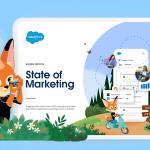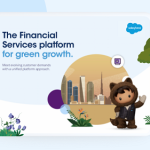As global consumers continue to demand more from the brands and businesses with whom they choose to engage, understanding the impact of evolving consumer expectations and behaviours is critical.
Leveraging responses from 15,000+ consumers and business buyers worldwide, our fourth edition of State of the Connected Consumer Report presents a broad view of what consumers want, with data-driven insights to support the evolution in business strategy that demands.
So, what do connected consumers want in 2021? Consumers want it all — from brands that share their values and demonstrate commitment to societal good, to convenient and personalised experiences. Today’s consumers are simply demanding more, and they’re demanding it digitally.
In this article we’ll dive into the digital-first and omnichannel demands of consumers, shining a light on the habits that have been cultivated in recent times and what they mean for brands looking to create engaging experiences going forward.
Evolution is an expectation
COVID-19 has changed the way businesses operate and is having a huge impact on sales teams and customer service. A service. A whopping 88% of consumers expect companies to accelerate their digital initiatives. Perhaps this is no surprise given the incredible shifts in work/life arrangements that have taken place across the globe and the remote nature of work that now characterises many industries. As consumers experienced the continuous blurring of the lines previously drawn between their working and personal worlds, their behaviours adapted in line with this increasingly digital existence.
These shifts in behaviour have already accelerated digital adoption exponentially. What’s more, it has crystallised the importance of a digital strategy built to evolve and change with the times.
As consumers spent more time in home offices and less time in stores throughout 2020, their expectations of online engagements rose, accelerating the timetable for digital transformation. While 76% of consumers expect consistent interactions across departments, businesses are falling short of the mark with 54% of consumers saying that it generally feels like sales, service, and marketing don’t share information.
Rising to the challenge of providing empathetic, trusted, and convenient experiences may not come easy for businesses, but the demand is clear. In a global market where 66% of customers feel as though they are treated as a mere number, evolving to provide increased digital options across channels presents an incredible opportunity for businesses to differentiate.
Customers in Belgium are particular when it comes to the experience on offer. In fact, 68% say experience is just as important as the products and services themselves.
Variety is key
On average, consumers are turning to nine channels throughout their buying journey as they browse inventory, seek advice and make purchases. Consider this alongside the insight that 76% of consumers prefer different channels depending on context and it becomes clear that an omnichannel presence is demanded of businesses.
As consumers look to various channels for different types of information and engagement, understanding consumer behaviour from customer acquisition to retention and ongoing service and support is critical.
Customer behaviour patterns should inform the different content and channels needed to support a variety of business functions. Content across channels should be complementary, leveraging an always-on approach that is monitored and modified to ensure the provision of the right information, at the right time, in the right place.
In 2020, channel popularity saw some changes, with messenger apps such as WhatsApp and Text/SMS becoming more popular. For the first time, we saw a video enter the top-ten space. Also notable are those channels with little to no movement; Email, Phone, and In-person engagement options remained the top three preferences globally.
Customers in Belgium prefer email by far; fully 97% are using that channel. The next most popular of the 13 channels our survey respondents from Belgium said they use to communicate with brands are:
- phone (84%)
- in-person (73%)
- online portals (64%)
- online chat/support (59%)
- mobile app (56%)
Being in the space your consumers want to engage with you is the first step to deepening your relationships.

With data comes great responsibility
While 60% of customers are open to the use of AI and machine learning in customer engagement, 65% are concerned about the potential for unethical use of it.
Going back to the importance of an omnichannel approach, AI can help to inform strategies by delivering insights on what content is desired by consumers in which channels throughout their journey, ultimately supporting a better consumer experience.
Whether through the buying stages leading to higher conversion rates, or supporting interactions and providing personalised service digitally, the opportunities for optimisation and enhancement for business operations are seemingly endless.
With proper integration and activation of content across channels — from emails to social content, to verticals and beyond — AI can support you in reaching customers in the places they are, but with data comes responsibility.
Only 48% of global consumers trust companies to use AI ethically, putting the onus on businesses to build trust before diving into AI-powered experiences.
Transparency is the foundation on which all other efforts may be built. With only slightly more than one-quarter of consumers (27%) completely understanding how companies are using their information, a lack of transparency is limiting the potential of digital engagement significantly.
Eighty-six percent of consumers say as much, wanting transparency over how their personal information is used.
Major areas of focus for customers in Belgium
Consider the issues that matter to customers from Belgium, too. ‘Organisational structure’ was lowest on our survey respondents’ list of priorities when it comes to areas in which customers feel business improvements are needed:
- Forty-nine percent indicated a major need for brands to improve environmental practices, with another 36% identifying this as a moderate need.
- Eighty-eight percent said customer service and support need improvement; 40% said this is a major need.
- Eighty-seven percent said products and services are a priority for improvements
Arm team members with access to data and the authority to make decisions that improve customer experience. Use technology intelligently to augment human decision-making, not replace it.
Customer journey mapping is a great exercise that can help pinpoint your greatest opportunities to focus on the competencies and practices that should be the highest priority on your development list.
Conclusion
Throughout 2020, unprecedented and ongoing global crises resulted in exceptional changes in consumer behaviours and expectations, reshaping the global marketplace. While the resulting landscape continues to shift and evolve, what is clear is that consumers are demanding more from businesses globally and will continue to do so.
More than simply a catalyst for change, this new normal presents an incredible opportunity for the organisations that take it.
The ability to leverage data and insights to re-evaluate their environment, and the wants and needs of consumers, with digital-first thinking at the forefront, presents incredible opportunities for differentiation.
Organisations that pivot and continue to adapt their digital-first and omnichannel strategies will be the ones that thrive. Read our complete State of the Connected Customer Report.
























